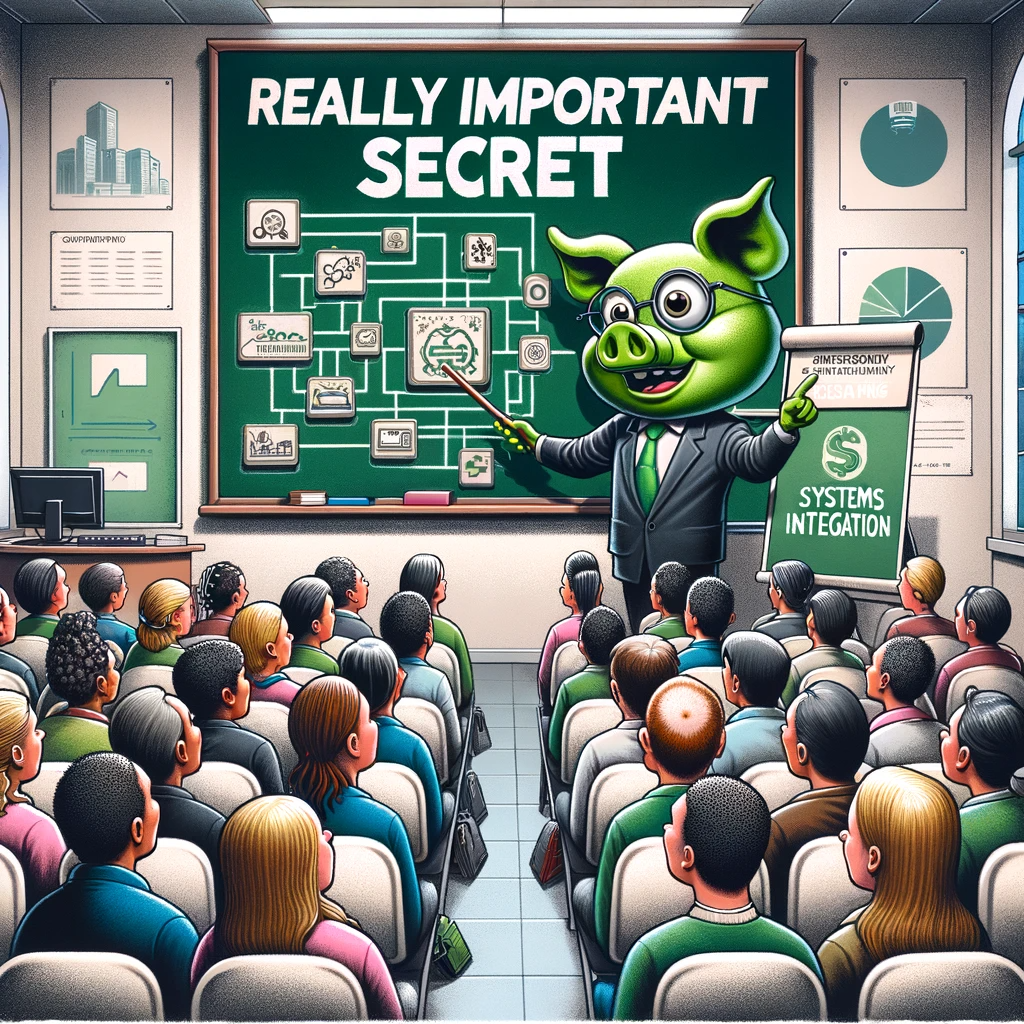AI enables us to solve problems at scale that were previously unsolvable. That’s why many see 2024 as the “Year of AI”.
Companies are moving quickly to allocate budgets toward AI investments. 40% of organizations surveyed by CapGemini said they’re already funding AI endeavors – and another 49% plan to do so within the next 12 months, and 74% believe the benefits will outweigh associated concerns.
In this blog, we’ll seek to understand four categories of AI application and what’s required to be successful with each type. The businesses that create the right building blocks for GenAI early stand to reap benefits that we can’t even yet comprehend.
Four Categories of Enterprise AI Applications
Any observations in this exponentially evolving space become dated very quickly. With that in mind, our team has observed four discrete categories of AI solutions entering the market. We’ll discuss these below and recommend how an organization can best incorporate them.
- Category 1: First-generation GenAI products
- Category 2: Product-enhancing GenAI
- Category 3: AI-enhanced business workflows
- Category 4: Enterprise-connected AI
Categories 3 and 4 offer the most potential for organizations seeking to gain a competitive advantage through AI. We’ll discuss the details of all four types below.
Category 1: First-generation GenAI products
These products would not exist without AI. Their main purpose is to provide broad, direct access to GenAI Large Language Models (LLMs) for end users. Examples of this category include ChatGPT, Midjourney, and Bard.
These solutions come from large tech companies that have invested heavily in creating and training their own LLMs to power commercial product offerings. The barrier to entry for using these types of solutions is low. (The barrier to creating them yourself from scratch, however, is quite high!) Organizations that wish to leverage them only need to train employees on their use for boosting productivity by eliminating tedious tasks.
Competitive Differentiation: Low
Complexity of Rollout: Low
Category 2: Product-enhancing GenAI
Companies are rushing to embed GenAI capabilities into existing products to capture more license revenue by adding value to existing product capabilities. An example is Salesforce’s GPT extensions to its sales, service, Slack, and other portfolio products.
These solutions make existing software offerings better and are very logical places to start since they own the screen pixels that drive user workflows. The tradeoff is that value is siloed to those products and can’t impact the enterprise at scale.
Organizations wishing to leverage these can upgrade existing licenses (if necessary) to key software offerings from Salesforce, Adobe, or Microsoft. They then need to provide employees with training and enablement on the newly surfaced GenAI features.
Competitive Differentiation: Low
Complexity of Rollout: Low/Medium
Category 3: AI-enhanced business workflows
Savvy companies are beginning to leverage APIs from LLM providers like OpenAI, Microsoft, or Google to improve upon existing business processes in ways that were impossible without GenAI. Here are a few examples:
- An HR department that uses GenAI to score resumes against a job posting and provide gap assessments to recruiters
- A home insurer that automates common underwriting tasks by searching documents using context and reason
- A quoting engine capable of detecting the intent of the user and aligning it to the right potential product offerings, increasing conversion, sales velocity, and CSAT
When applied to the right use cases, this category of AI solution allows a business to eliminate process bottlenecks, reduce overhead costs, increase employee effectiveness, and ultimately provide a significant impact on critical revenue and profitability drivers.
Organizations serious about these solutions should take inventory of problematic, high-impact bottlenecks impacting the bottom line. These include pipeline management, inventory and supply chain, customer onboarding, call center workflows, and talent acquisition processes. GenAI will enable many solutions to these problems that weren’t previously possible.
Competitive Differentiation: Medium/High
Complexity of Rollout: Medium
Category 4: Enterprise-connected AI
These future-generation solutions will allow AI to perform strategic actions on behalf of an employee or customer persona. This will enable interaction with the brand in ways impossible before GenAI.
A great example is a chatbot that can book a travel plan to a user’s granular travel requirements. GenAI will perform tasks that would’ve taken a travel agent half a day in a few seconds.
This type of AI application promises to revolutionize how we interact with brands. It stands to cause a monumental shift in how we think of human-computer interaction. We’ll take a deeper look into this specific category down below.
Companies looking to harness this type of AI solution should start by taking a fresh look at poor user experiences driven by task complexity. GenAI promises us the ability to detect the intent of the user and act on their behalf. In other words, there are now better ways to drive complex workflows in a more user-friendly way.
Competitive Differentiation: High
Complexity of Rollout: Medium/High
Differentiating with AI
Categories 3 and 4 of AI solutions unlock the most enterprise value for organizations. Innovative solutions have the potential to provide enormous competitive advantage when executed correctly. These solutions will require companies to address an age-old problem: systems integration.
Modern cloud software like Salesforce, Dynamics365, and NetSuite powers business user workflows. And as long as an implementer stays within the platform’s best practices, it’s rare to find any major issues in the SaaS tier.
The technology obstacles that cause issues – the ones that take months or even years to address – are almost always caused by a lack of interoperability with the enterprise’s hundreds or thousands of other systems and solutions.
Unfortunately, too many organizations today brute-force these solutions to get them to “just work.” The result is that these systems integrations are inherently brittle and sloppy. This leads to an immense level of fragility. It’s a major reason why 80% of IT leaders surveyed by MuleSoft said that integration hinders digital transformation.
As MuleSoft Founder Ross Mason said, without connectivity, AI is merely a “brain in a jar.”
Next Steps
When you consider the load that AI integration will put on interconnectivity, you can see how the integration issue is the biggest hindrance to adopting GenAI at scale in the enterprise. Tune in next week for the second part of this blog series on how to prepare your systems integration strategy with AI in mind.
Ready to learn more about riding the Generative AI wave? Download our comprehensive white paper on AI Readiness and start your AI Superhero training today.




